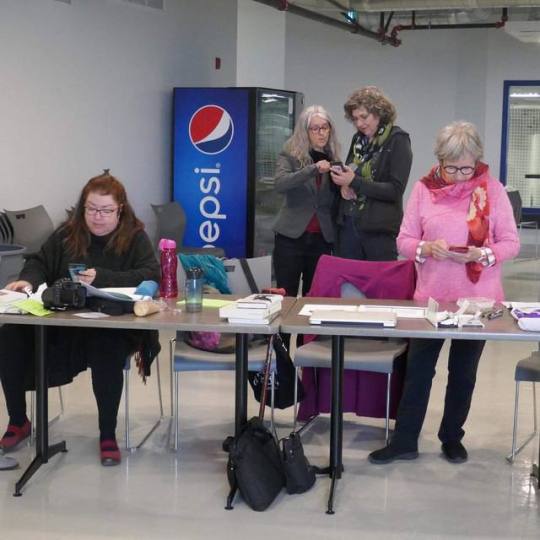#paspebiac
Explore tagged Tumblr posts
Photo

Truck Tuesday! Paspebiac, Quebec, Canada https://goo.gl/maps/rgVTq3XmZUu3Cfz17
3 notes
·
View notes
Photo

Réveillon de fin d’année! #reveillon #tempete #storm #soireetranquille #rhume #gaspesie #paspebiac #31december #31decembre #verglas #neige #snow #creationsouslaneige #creativite #photographie https://www.instagram.com/p/B6ysZkLFahQ/?igshid=aq1chsrm6s1e
#reveillon#tempete#storm#soireetranquille#rhume#gaspesie#paspebiac#31december#31decembre#verglas#neige#snow#creationsouslaneige#creativite#photographie
0 notes
Photo

En attendant de partir pour #paspebiac (at Plateau Mont-Royal) https://www.instagram.com/p/BrsLo9xnW_y/?utm_source=ig_tumblr_share&igshid=1cux41okxmk2w
0 notes
Link
0 notes
Photo

“Defeated Candidate Says Marcil’s Words Drove Youths Insane,” Border Cities Star. April 17, 1919. Page 10. --- Quebec, April 17. - Testifying under oath at the trial of certain draft evaders of Bonaventure county before court martial in this city, Philippe Fuoris made some sensational statements regarding the speeches delivered in that county by Hon. Charles Marcil and Hon. John Hall Kelley.
Mr. Furois declared he believed the young men of Bonaventure were driven to exasperation, and even to insanity by the speeches delivered by Hon. Charles Marcil, Hon. John Hall Kelley and others in connection with the M.S.A. He said these speakers depicted the situation in such a terrifying manner that at the time of a meeting held by Mr. Marcil at Paspebiac on November 16, 1917, two young men named Dela and Rosbil were taken violently insane and had to be removed to the asylum at Beauport, where one of them died since then, Mr. Furois said further in his testimony that in spite of the campaign conducted, the young men of Bonaventure county generally responded to the call, and it was only a few feeble-minded who were misled by the campaign. He said the court should be indulgent with them, and more severe with the really guilty parties - those who betrayed their confiendece for interested purposes.
Mr. Furois was the Unionist candidate who opposed Hon. Mr. Marcil in the last federal election.
#world war 1 canada#ville de québec#histoire du québec#resistance to conscription#conscription#conscription in canada#french conscripts#bonaventure#federal election#violent insanity#criminally insane#military defaulter#refusal to serve#military service act#crime and punishment in canada#history of crime and punishment in canada#charles marcil#philippe furois
0 notes
Text
Pinned to Awesome Pins on @Pinterest: Paspebiac Sunset by mclement9748 https://t.co/PcngzIAwHI
Embed code not available
from Twitter https://twitter.com/s4b7f2 January 07, 2017 at 07:29AM via IFTTT
0 notes
Photo

Belle illumination de ma municipalité. Vive le temps des fêtes! 🎄 #noel #christmas #decoration #lumieres #light #paspebiac #gaspesiejetaime #lhiverengaspesie #lumieresdenoel https://www.instagram.com/p/B56on18lITj/?igshid=a3ge73dsvv4y
0 notes
Photo

En manque de #guruenergie au IGA #paspebiac 😱
0 notes
Photo

Les feuilles s’en sont allées 🍂. #automne #autumn #feuillesmortes #leaf #netb #bnw #lhiverestanosportes #casentlaneige #octobre #october #paspebiac #gaspesie #lavierurale #simplelife https://www.instagram.com/p/B35ZC0UF5M-/?igshid=1cljoesmbog4f
#automne#autumn#feuillesmortes#leaf#netb#bnw#lhiverestanosportes#casentlaneige#octobre#october#paspebiac#gaspesie#lavierurale#simplelife
0 notes
Photo

Les plus belles nuits sont à #paspebiac (at Paspebiac, Quebec)
0 notes
Photo

Belle journée de fin d’été! #summer #été #paysage #landscape #paspebiac #gaspesie #gaspesiejetaime #sitehistoriquedepaspébiac #mer #sea #quebecmaritime #marina #lavieestbelle #lavitaebella #ciel https://www.instagram.com/p/B2F3jQPl8X1/?igshid=9gvgq9lsa5k
#summer#été#paysage#landscape#paspebiac#gaspesie#gaspesiejetaime#sitehistoriquedepaspébiac#mer#sea#quebecmaritime#marina#lavieestbelle#lavitaebella#ciel
0 notes
Photo

Présentation de l’Œuvre de @natachaclitandre au Centre Culturel de Paspébiac #photographie #photography @photogaspesie #art #culture #paspebiac #plage #beach #intervention #residence https://www.instagram.com/p/B1T8c79FD4I/?igshid=137vk06p6btpj
0 notes
Photo

Quel beau spectacle de mon ami et mentor Pierre Michaud au Pavillon de la plage de #paspebiac pour son hommage à Félix #chanson #spectacle #bellesoiree #chansonquebecoise #amitié https://www.instagram.com/p/B04xztAlJUl/?igshid=1xhpxsbpo593g
0 notes
Photo

Tu sais, des ciels comme ça, juste WoW! #sitehistoriquedepaspébiac #paspebiac #ciel #sky #hdrphoto #photographe #photographer #intensité #gaspesie #gaspesiejetaime #quebecmaritime #quebecoriginal #paysage #landscape https://www.instagram.com/p/B0ZP593FDDn/?igshid=80uard0mzfet
#sitehistoriquedepaspébiac#paspebiac#ciel#sky#hdrphoto#photographe#photographer#intensité#gaspesie#gaspesiejetaime#quebecmaritime#quebecoriginal#paysage#landscape
0 notes
Photo

En période de réflexion pour la création! Atelier avec la formidable artiste @cel.boucher #artiste #creation #creativite #atelier #formation #artist #culturegaspesie #art #allerdelavant #croireensoi #believeinme #gaspesiejetaime #paspebiac #centresportifpaspebiac #amies #friends #partage https://www.instagram.com/p/ByV_wzhlEYK/?igshid=jardygb7st6b
#artiste#creation#creativite#atelier#formation#artist#culturegaspesie#art#allerdelavant#croireensoi#believeinme#gaspesiejetaime#paspebiac#centresportifpaspebiac#amies#friends#partage
0 notes
Photo

Assemblée générale annuelle du #tctic #jaimemajob #numérique #bilan #travail #gaspesie #paspebiac #centreculturelpaspebiac https://www.instagram.com/p/BxyZam9lPpM/?igshid=wy3aw1ogt93f
0 notes